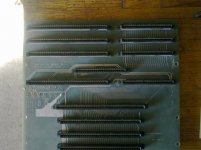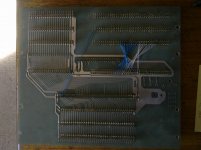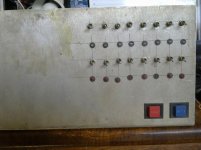falter
Veteran Member
I was feeling kinda bummed about missing those early Rev Apple II boards. I skipped the Rev 1 to conserve funds for the Rev 0, but missed the Rev 0 by just a few bucks because I didn't bother to up my bid enough. Oh well.
However I came across this in the dying minutes of its auction:
http://www.ebay.com/itm/Z80-Compute...ry-rare-computer-from-the-1970s-/371549849675
To be honest, I'm not a big Z80 fan. I don't know why - apart from a few pieces like my ZX80, etc.. I've always kind of seen the Z80 as the Toyota Camry of CPUs. But this piece, allegedly, is the very first computer designed around the Z80, and I know Digital Group was popular back in the day, though it failed because of supply problems. I actually only noticed the keyboard first, which I believe is the same unit used by some of the orignial Apple I builders. My collection, which has about 100 pieces thus far has been kind of scattergun, but I've begun lately to focus on rarer/unusual/homebrew stuff. This seemed to fit the bill.
Anyway, I threw in the minimum bid and got it unopposed. Which means either I overpaid, or just fluked out. I was sure I wouldn't get it -- so used to bid snipers, but they didn't appear. Personally I don't think I overpaid if the history is correct and this is what it purports to be. I like that it even has some software thrown in with it, if those cassettes are correct and still good. I don't know.. I think $695 was a decent price.. what do you think? Is its claim to being the first Z80 computer true?
However I came across this in the dying minutes of its auction:
http://www.ebay.com/itm/Z80-Compute...ry-rare-computer-from-the-1970s-/371549849675
To be honest, I'm not a big Z80 fan. I don't know why - apart from a few pieces like my ZX80, etc.. I've always kind of seen the Z80 as the Toyota Camry of CPUs. But this piece, allegedly, is the very first computer designed around the Z80, and I know Digital Group was popular back in the day, though it failed because of supply problems. I actually only noticed the keyboard first, which I believe is the same unit used by some of the orignial Apple I builders. My collection, which has about 100 pieces thus far has been kind of scattergun, but I've begun lately to focus on rarer/unusual/homebrew stuff. This seemed to fit the bill.
Anyway, I threw in the minimum bid and got it unopposed. Which means either I overpaid, or just fluked out. I was sure I wouldn't get it -- so used to bid snipers, but they didn't appear. Personally I don't think I overpaid if the history is correct and this is what it purports to be. I like that it even has some software thrown in with it, if those cassettes are correct and still good. I don't know.. I think $695 was a decent price.. what do you think? Is its claim to being the first Z80 computer true?




